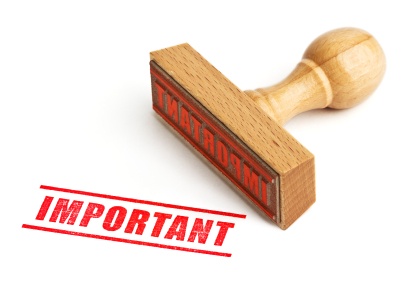Are you planning to take the SAT? Wondering how to handle the vocabulary questions? We will explain how the new SAT tests vocabulary and what that means for your study plans. Read on for an exclusive guide to new SAT vocabulary!
Studying hundreds of fancy words from big lists has long been a mainstay of SAT prep. But with the redesigned SAT focusing on medium-level words in the context of passages, do you still need to drill yourself on little-used vocab words?
Before you expend superfluous energy to bolster your cognizance of recondite terminology (or waste time learning lots of obscure words), read this guide to learn what vocabulary you need for the new SAT. First, what changes are being made to the SAT in terms of vocabulary?
With the new 2016 SAT, Khan Academy has partnered with the College Board to create a free SAT prep program.
All things considered, Khan Academy's SAT prep program is high quality. It's a great introduction to the test and elevates the bar of free SAT materials. Students unable to afford books or prep programs have a useful resource to train for the test.
But it's not complete.
There's still a lot missing from the Khan Academy SAT program that can prevent you from getting the highest score possible.
In this review, you'll understand what exactly is wrong with the Khan SAT program—and why the partnership with the College Board means these problems will never be fixed. If you plan to use the Khan Academy SAT program, this will show you what you're missing.
You might have heard that College Board released a new version of the SAT in 2016. So what should you do if you want to prepare for this version of the SAT but are mainly familiar with the old version? And do you really have to throw out all of your "old SAT" study materials?
We will go through the SAT section by section and note key differences between the old and new SAT. Next, we will explain how to prep for the new SAT based on those differences. We will point out places that you can still use old prep materials to prepare for the new SAT and also point you toward other free study resources online. We will also link extensively to our SAT study guides throughout this post to give you more targeted advice by section.
In 2014, the College Board released a giant 210-page specification for the redesigned SAT which first started being implemented in the Spring of 2016.
We’ve read through this document page by page so you don't have to. This article is a new SAT guide that will go through the most relevant points for students, parents, and educators to understand about the new SAT test. We'll dig deeper than most of the guides out there, which seems preoccupied with superficial changes like easier vocabulary and the shift to a 1600 scale.
On the newly redesigned 2016 SAT, the math section content is divided into four categories by the College Board: Heart of Algebra, Problem Solving and Data Analysis, Passport to Advanced Math, and Additional Topics in Math. Heart of Algebra accounts for the largest part of the SAT math section (33% of the test), so you need to be well prepared for it. In this post, I'll be discussing this category's content and question types, working through practice problems, and giving tips on how to ace these questions.
For the past decade or so, the SAT has come under increasing scrutiny for its confusing structure, trick questions, and obscure vocabulary. Meanwhile, the ACT is often seen as the fairer test, more closely based in what students learn in school.
As you might have heard, the College Board undertook a radical overhaul of the SAT that went into effect in March 2016 and, in many ways, made it much more similar to the ACT. Adding to the confusion is the fact that ACT, Inc., also made some minor changes to the ACT.
What are the main differences between the current versions of the two tests? The short answer is that the SAT and ACT are now quite similar. The changes have eliminated many of the two tests' major differences in both style and content. Nonetheless, there remain important variations—some long-standing and some newly introduced.
The scoring model on the new SAT differs significantly from the scoring model that was used on the old version of the test. It's important to be aware of these changes so that you can plan your studying and test-taking strategies accordingly.
In this article, I'll go through all the scoring differences that have taken place for the new SAT and what they mean for you as a student.
The SAT underwent significant changes in 2016, so it's important to know how to set score goals based on the newest version of the test. The test is now out of 1600 points instead of 2400 (i.e., the maximum score on the old, pre-2016 SAT).
In this article, I’ll explain what a good score on the new SAT is and show you how to calculate an appropriate goal score for yourself based on where you're applying for college.
Confused By Your New SAT Score? 2 Controversies, Explained
With the launch of the redesigned SAT in March of 2016, a new era was born in standardized testing. While the College Board was hopeful that there would be no issues with the new test or its familiar scoring system (maximum score of 800 per section), unfortunately there have been scoring issues that are confusing and upsetting students. Furthermore, the College Board has managed to irk its arch nemesis, the ACT.
In this article, I’ll break down these controversies and explain what they mean for you.
What Is the New SAT Like? Student Reactions to the Test
The newly redesigned 2016 SAT debuted on March 5th. If you haven't taken it yet, you may be wondering what to expect: What is the New SAT like? What did students think of the exam? Was it easier or harder than the old SAT? How did it compare to the ACT?
In this article, I’ll discuss the reactions to the new SAT and talk about what it means for you.
On first glance, your SAT score report may look completely confusing. Altogether, you’ll get a total of 15 distinct scores, or 18 if you take the essay section! While the scores are numerous, they're also helpful. They put your results under the microscope and give you detailed feedback about your performance.
This guide will demystify all these test scores, cross-test scores, and subscores so you can make the most out of your SAT score report. Let’s start with a glossary to help you keep track of all the different score types.
Times, they are a-changin’. Bob Dylan’s 1964 anthem of change may not have originally referred to a college admissions test, but it certainly applies to the SAT overhaul of 2016. The redesigned test features huge changes from its previous version, in terms of its structure, scoring, and content.
Read on to learn about the major updates and what you can do to prepare for them. To start, let’s take a look at the test’s structure and exactly how it’s a-changin'.
High Score on the Old SAT: Should I Take the New SAT?
If you’re a current high school student, then you’re caught in a big transition between the old SAT and the new SAT. You may have thought you were all set with a high SAT score, but now you’re wondering, “Should I take the new SAT?”
Not to worry, help is here! You can easily resolve this concern by asking yourself two key questions. First, find out whether your colleges require the new SAT. If they don’t, feel free to scroll down to the next important question: is your score on the old SAT really high enough to achieve your goals?
Read on to consider one or both of these questions, and determine once and for all whether or not you need to take the redesigned SAT.
The SAT has had a complete makeover. Just a quick glance will show you that it barely resembles its previous self. Many students, luckily, will find its transformation quite attractive.
This guide will help you catch up on the changes with a comprehensive overview of the new SAT format. Read on to learn about the test’s new design and scoring, followed by some tips on what these changes mean for test-takers. To begin, let’s go over the overall structure of the SAT.
























